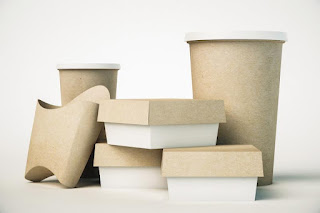How Can You Improve the Speed and Efficiency of Your Restaurant's Packaging Operations?
Packaging is among the key tasks in any restaurant or
food delivery business. The extensive time spent on packaging operations often
results in delays and decreased efficiency. Read this blog to find out how you
can improve the speed and efficiency of your restaurant packaging operations.
Introduction
Packaging plays a vital role in the food delivery
business. It serves the fundamental functions of preserving food quality,
preventing product spilling or leaking, minimising food waste, and
communicating brand messaging to customers. The material, design, and quality
of restaurant food container packaging, as well as how it is handled, play a
vital role in communicating your brand values to customers.
Proper packaging of food items for delivery has several
functions. It provides protection from potential risks during distribution and
preserves the food by reducing or eliminating chemical, biochemical, and
microbiological changes and spoilage. It also provides information about the
product—legal requirements, ingredients, use, etc. Moreover, it offers
convenience for package handlers and users throughout the packaging chain.
Challenges in Packaging
Packaging in the food industry, particularly in
restaurants, has many challenges. Some of the major challenges include:
A.
Procurement of Restaurant Food Container Packaging:
Supply chain disruptions have made it more difficult to
procure packaging that is necessary for food and environmental safety. This
disruption has resulted in difficulties in sourcing the necessary materials and
ensuring their compliance with legal requirements. Additionally, the increased
demand for sustainable packaging options adds another layer of complexity to
the procurement process.
B.
Environmental Impact of Packaging:
Another challenge is the environmental impact of
packaging. The restaurant industry is linked to a number of environmental
issues, including inefficient water usage, non-recyclable packaging, and waste
production.
C.
Storage Issues:
In addition to the environmental impact, storage issues
can also pose a challenge in the restaurant industry. Finding space to store
sustainable packaging options can be difficult, especially if they require more
room than traditional packaging materials. With traditional food packaging
supplies like Styrofoam, which contain separate lids, managing limited storage
space can become even more challenging. Additionally, the need to properly
organise and rotate perishable ingredients and supplies adds another layer of
complexity to storage management in restaurants.
D.
Paradoxal Issues:
Lastly, there are paradoxes in food supply chains
related to packaging. These paradoxes arise from conflicts of interest related
to packaging. For example, while single-use packaging might be convenient and
cost-effective, it contributes to environmental pollution. On the other hand,
while reusable packaging is environmentally friendly, it might not be as
convenient or cost-effective.
How Anchor Packaging Can Help Overcome These
Challenges
Anchor
Packaging offers a wide range of clear food packaging supplies that are
both convenient and environmentally friendly. They are a leading manufacturer
and supplier of rigid containers and all-purpose cling film for restaurant and
delivery businesses. The company offers a variety of packaging supplies,
including hot food packaging and hinged containers, to restaurants,
supermarkets, caterers, and bakeries.
They offer a variety of innovative and sustainable packaging
solutions, such as Safe Pinch® Tamper-Evident containers and Crisp Food
Technologies® containers. These packaging solutions are designed to ensure food
safety and prolong the freshness of the products. In addition, the hot food
packaging options are specifically designed to keep food warm and prevent
leakage during delivery.
In addition to providing high-quality packaging
solutions, Anchor Packaging also prioritises sustainability. All their rigid
products are manufactured in polypropylene (PP), one of the most recycled food
packaging materials nationwide. They also follow the EPA’s Solid Waste
Management Pyramid Strategy of “Reduce, Reuse, Recycle, and Recover”.
Pro Tips to Improve Packaging Efficiency
●
Fit the
Packaging: Ensure the packaging size and shape is appropriate for the
product.
●
Right Materials:
Choose packaging materials based on the product’s needs.
●
Recyclable and
Reusable Packaging: Use recyclable and reusable packaging to reduce
environmental impact.
●
Design for Efficiency:
Make sure the packaging design is easy to handle.
●
Train Your Staff:
Train staff on handling different types of packaging materials and operating
packaging machines.
Efficient packaging is about speed, reducing waste,
ensuring product safety, and enhancing customer satisfaction.
Bottom Line:
As we move forward, it is clear that the future of
restaurant packaging is evolving rapidly, with several trends shaping the
industry. Staying abreast of these trends can help restaurant owners and food
delivery partners stay competitive and meet the changing expectations of their
customers.
If you are a
restaurant owner or a food delivery partner looking to improve your packaging
operations, consider Anchor Packaging for your packaging needs.




Comments
Post a Comment